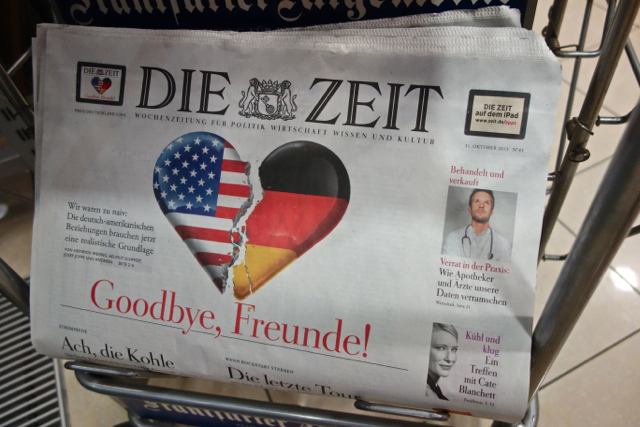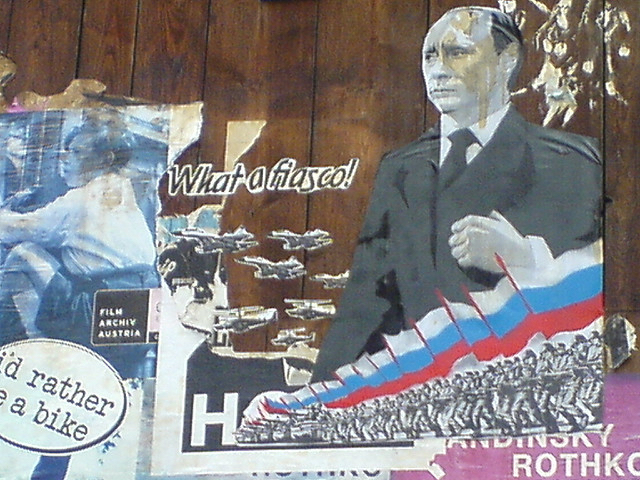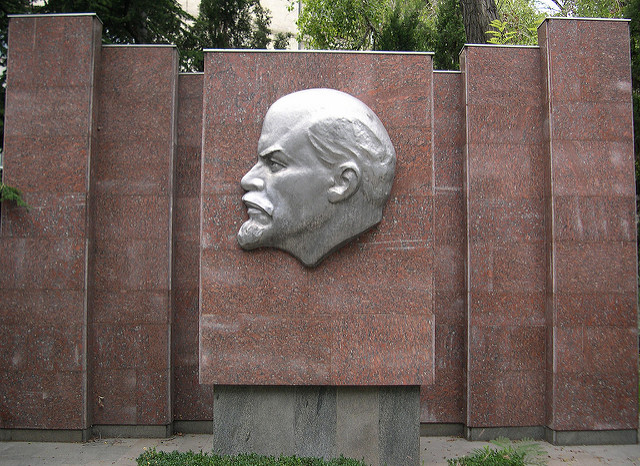People with direct experience of totalitarian regimes are understandably wary of iconography. When you’ve been exposed to stylized images of Hitler, Stalin, Mao and their ilk day after day, year after year, seeing anybody flattened into a stereotype is unsettling. And when that celebrity treatment has explicitly political implications, the anxiety mounts.
Shepard Fairey’s famous “HOPE” poster for Barack Obama in 2008 invited what we might call totalitarian identification rather than the sober-minded reflection for which the future President was known. That’s why many Germans, however much they may have liked him, expressed concern with the way Obama was being marketed. And there are many, who now feel confirmed in their original fears, following Edward Snowden’s revelations of mass surveillance, by US signal intelligence, in Germany.
Hence, the Die Zeit cover, above. It’s not just about feeling feeling betrayed, by a relationship that was supposed to be centered on the promotion of freedom, and democracy. It’s also about feeling transported back in time – to the eras of Communist and Nazi fascisms, which Germany has worked so hard to escape.
Nevertheless, there’s also a way in which proximity to a totalitarian past can make such image-making more appealing, under the sign of irony. The easiest way to distance oneself from the cult of personality surrounding someone like Hitler was to poke gentle fun — in private, for safety’s sake — at the exaggerations and elisions of the propaganda machine. That way it was possible to dispel the myth of a people united by their super-rational devotion to der Führer without taking the risk of criticizing him directly.

The further we get from the Nazi era, though, the harder it becomes to inhabit this strategy of resistance. While Hitler’s image still packs a powerful punch, not many of the people who had to cope with it during his lifetime remain. He is an icon still, to be sure, but one whose exceptionality has been compromised to a degree, making it possible to perceive a rudimentary equivalence between him, Stalin and Mao on the one hand and Andy Warhol favorites like Marilyn Monroe and Elvis Presley on the other.
This telling photograph highlights the dilemma, suggesting both that Edward Snowden has entered that pantheon and that Hitler’s place is a function of quantity — just how notorious he has been and for how long — rather than quality — cordoned off from more benign celebrities. Icons pull in readers, regardless of the deeds that made them famous.
Fittingly, one of the best-known détournements of Snowden’s image substitutes him for Obama in the “HOPE” poster, confirming, albeit with an ambiguous valence, that the democratic impulse which moves people to argue that “We are all Edward Snowden” is frustrated by the realization that, even if we are all Edward Snowden — or Adolph Hitler, for that matter — the marketing of that identity demands fervent individuation.
Commentary by Charlie Bertsch. Photographs courtesy of Joel Schalit.





